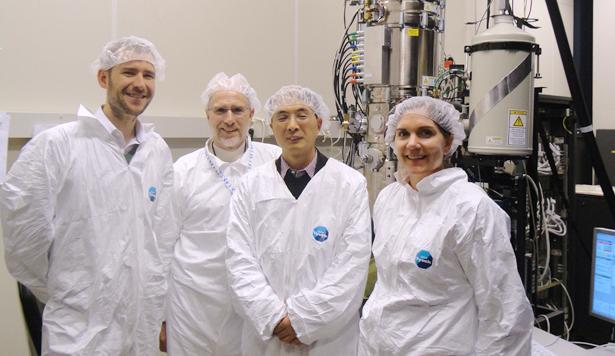A new AC-STEM, aberration-corrected scanning transmission electron microscope, has been added to N.C . State’s campus and is expected to increase research across North Carolina’s Research Triangle.
“The AC-STEM came to campus from different colleges that collectively recognized having an instrument like this on campus would accelerate research not only on campus but also in the Triangle,” Jim Lebeau , materials science and engineering assistant professor, said.
It is the first in the U.S . that incorporates a 300 kilovolt AC-STEM with monochromation and state-of-the-art x-ray detection features. The AC-STEM itself allows for spatial imaging resolution down to 80 picometers .
“This instrument can be used to probe the atomic structure of materials. It’s really a leading edge instrument; we are really pushing the limits of what can be achieved. This will play a critical role in research for N.C . State, and also have a broader impact beyond this campus,” Lebeau said.
The monochromation technology provided by the AC-STEM allows researchers to use spectroscopy at the atomic length scale, providing insight into the atomic structure of materials and how the atoms of the materials are bonded together.
Understanding these bonds helps researchers control a material’s electrical, mechanical, optical and other intrinsic properties.
“All of a material’s properties are determined by their atoms and how they’re distributed. So we want to know what every atom is and where it is. This machine will get us pretty close to that goal. And it will be a transformational boost to our research into a number of fields, such as how materials interface with one another,” Beth Dickey, professor of materials science and engineering, said.
The AC-STEM also uses four x-ray detectors that can be used to measure x-rays given off when electrons pass through a material. The information from the detectors can be used to determine the composition of a sample at an atomic level.
All the features provided by the AC-STEM are helpful to researchers due to the data that is obtained from using the new technology. The AC-STEM has increased the available technology on campus and in the Triangle, and has also increased N.C . State’s opportunities for major research grants.
”But it will also accelerate materials and device research in the Triangle. Most companies can’t afford this type of equipment, or don’t have the expertise needed to use it effectively. But they will have access to it now through partnerships with the University. This will give us an unprecedented capacity for materials characterization in this region,” LeBeau said.
In addition to creating more research opportunities, the new AC-STEM will also allow N.C . State to train students and professionals who are interested in the electron microscopist profession.
“I don’t know much about this type of technology, but I think having this on N.C . State’s campus is pretty cool. Engineering is such a large part of this campus, so having this addition will only expand that quality about N.C . State,” Anthony S. Holmes, sophomore in agricultural business management, said.
The technology provided by AC-STEMs is used by some of the world’s leading R&D companies and manufacturers.
Although there is a shortage of skilled electron microscopists to help those companies use AC-STEM technology, the University’s new AC-STEM will help increase the number of people entering the field by offering training for future electron microscopists .
“One of our goals is to train scientists with the technical skills needed to fill this niche in the R&D community,” LeBeau said.





